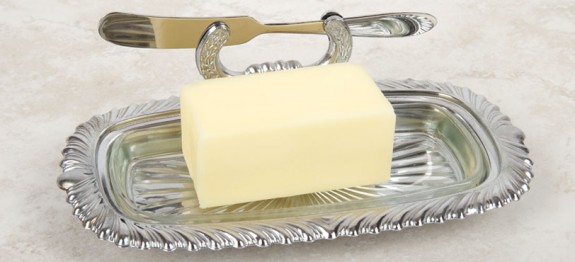Salted vs. Unsalted Butter
Virtually every celebrity chef and cooking show recommends cooking and baking with unsalted butter. The rationale is using unsalted butter allows you to control how much salt is in the food. But does cooking with unsalted butter really make that big a difference? Considering how much salt is added to foods especially processed foods, fast foods and many restaurant items are you better off using unsalted butter or omitting the salt called out in the recipe and use salted butter? The answer depends on how much butter is required for the recipe, if you are on a low sodium diet, and your tolerance for sodium.
It wasn’t long ago when most stores and supermarkets only carried salted butter. Salt is added to butter as a preservative. Unsalted butter manufactured on the same day as salted butter has a shorter shelf life. Short shelf-life can increase waste; unsold foods discarded for reaching their sell by date. Today, due to the increased popularity of unsalted butter, every supermarket carries one or more brands.
Typically, a tablespoon of salted butter (15 ml, 14 g) has between 90 to 100 mg of sodium. So four ounces (8 tablespoons) has between 720 and 810 mg of sodium. One teaspoon of table salt has 2360 mg of sodium. If a recipe using butter calls for 1 teaspoon of salt it would be equivalent to 12 ounces or more of butter. Very few recipes have that much butter. Reducing or eliminating the salt will reduce the amount of sodium in the recipe compared to using unsalted butter.
A recipe calling out 2 to 4 tablespoons (30 to 60 ml) of unsalted butter is not worth the expense of buying unsalted butter, if you normally buy salted butter, to eliminate 200 to 400 mg of sodium. If the recipe has 4 or more servings, the reduction in sodium is 100 mg per serving or less. Eliminate a teaspoon of salt and you eliminate over 500 mg of sodium per serving. Substitute kosher salt for table salt and you decrease sodium by 50 percent.
For recipes that require 8 or more ounces of butter, you may still be ahead by eliminating the salt or using kosher salt. If your doctor has advised you to severely restrict sodium intake, cooking and baking with unsalted butter and eliminating salt from the recipe will result in the lowest amount of sodium per serving.
Margarine has about the same amount of sodium per tablespoon.


